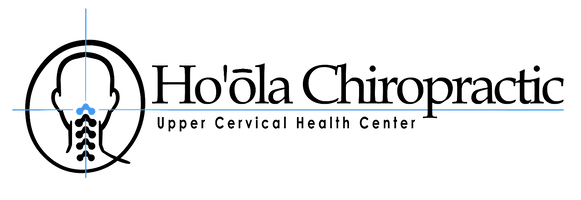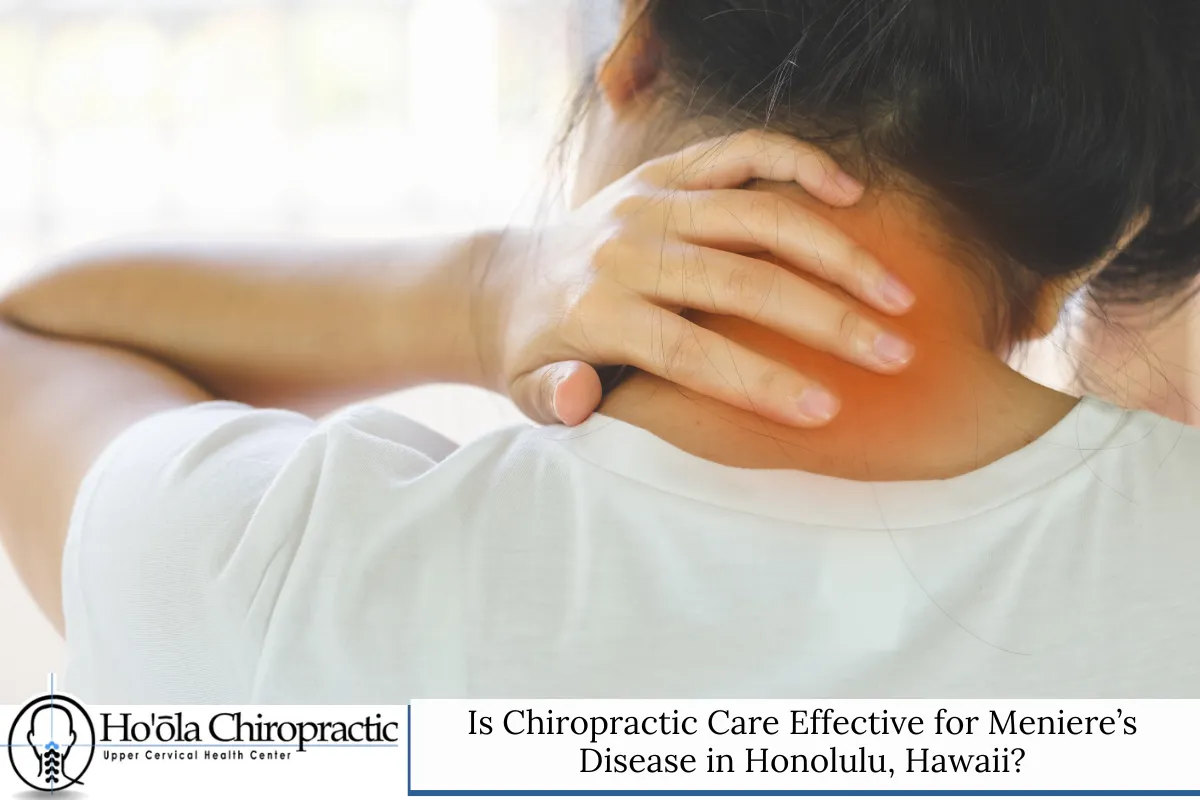Meniere’s disease chiropractic options in Honolulu, Hawaii are gaining attention among those seeking relief from a challenging inner ear disorder. People suffering from Meniere’s disease often feel frustrated by persistent symptoms like hearing loss, ringing in the ear, aural fullness, and recurring vertigo. These symptoms not only disrupt daily routines but can also create anxiety and isolation. Unfortunately, many find that traditional medical care focuses on managing the symptoms rather than the root cause. This leads patients to search for alternative treatment options—especially upper cervical chiropractic care—to address the underlying issues related to spinal alignment, nervous system function, and fluid buildup in the inner ear. But is chiropractic treatment a safe and effective solution for Meniere’s disease in Honolulu? Let’s explore the science, benefits, and what local patients should know before choosing this approach.
How Meniere’s Disease Affects Honolulu Residents
Understanding the Impact of an Inner Ear Disorder
Meniere’s disease is a chronic inner ear disorder that affects balance and hearing. It often causes a sensation of spinning (vertigo), fluctuating hearing loss, ringing in the ear (tinnitus), and aural fullness. The primary cause is believed to be endolymphatic hydrops—an abnormal buildup of fluid in the inner ear. In Honolulu and throughout Hawaii, the condition can affect people of all backgrounds and ages, but is most common in adults aged 40 to 60.
The Daily Burden of Unpredictable Symptoms
Honolulu residents living with Meniere’s disease may experience:
- Sudden dizzy spells
- Trouble walking or driving
- Difficulty working or enjoying outdoor activities
- Social withdrawal due to fear of unpredictable attacks
In a region where active, healthy lives and outdoor enjoyment are priorities, the physical and emotional toll can be especially challenging.
The Link Between Spinal Alignment and Inner Ear Health
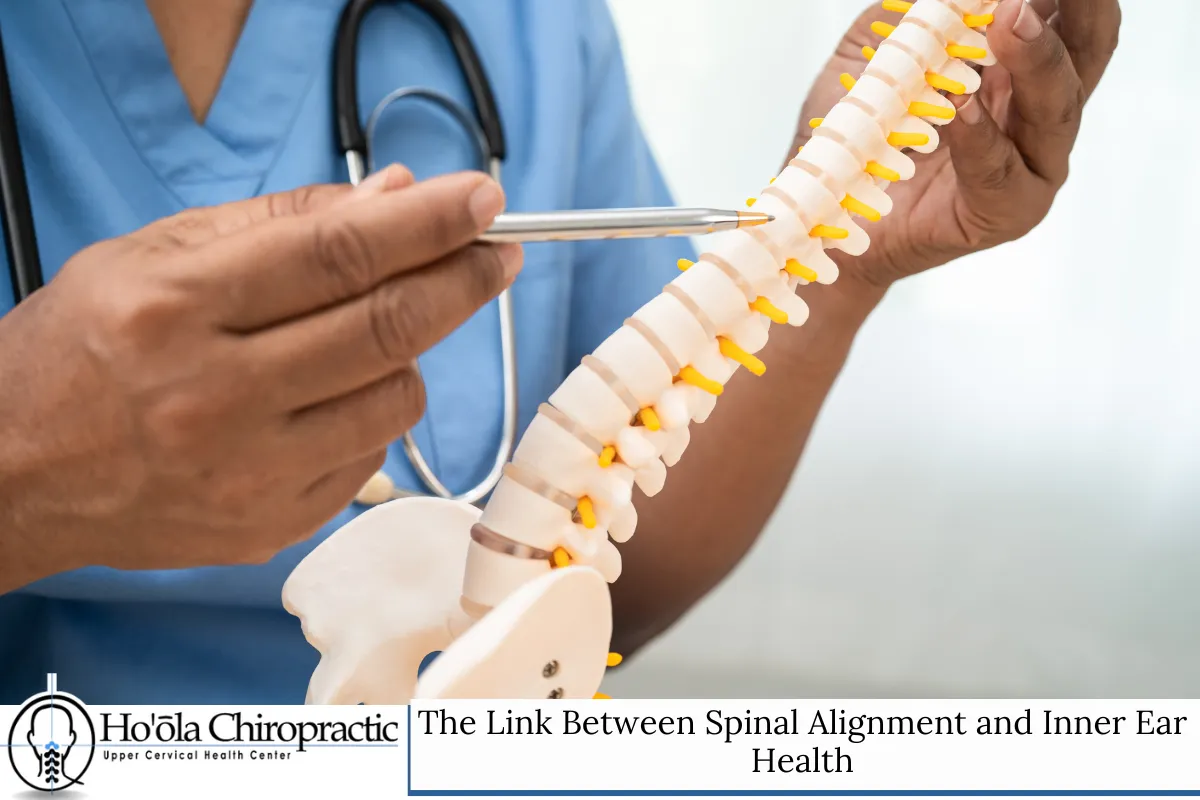
How Upper Cervical Spine Issues Influence Meniere’s Disease
Researchers and practitioners have observed a connection between the cervical spine—particularly the upper cervical spine, which includes the atlas (C1) and axis (C2) vertebrae—and the function of the inner ear. Trauma or cervical misalignment may contribute to restricted cerebrospinal fluid flow and nerve interference affecting the vestibular system, which helps control balance and hearing.
Key Points:
- The atlas vertebrae (C1) sits just beneath the skull and houses the brain stem, a critical area for neurological function.
- The upper cervical area is closely linked to cranial nerves, including the vestibulocochlear nerve, which influences balance and hearing.
- Cervical spine misalignments may disrupt blood flow, cerebrospinal fluid drainage, and sympathetic signals, contributing to inner ear problems like endolymph buildup.
Exploring Chiropractic Care for Meniere’s Disease in Honolulu
Why Patients Seek Chiropractic Treatment
Many Honolulu residents turn to chiropractic care—especially upper cervical chiropractic—after finding little relief from conventional treatment options such as steroid injections, blood pressure medications, or surgical shunts. Chiropractic treatment focuses on correcting spinal misalignments and restoring proper nervous system function, aiming to address the root causes of Meniere’s disease symptoms.
Common Reasons for Choosing Chiropractic Treatment:
- Desire for non-invasive options without drug side effects
- Preference for a holistic approach to back health and inner ear wellness
- Frustration with slow progress or recurring symptoms from other therapies
What Does Upper Cervical Chiropractic Involve?
The Role of the Upper Cervical Chiropractor
An upper cervical chiropractor specializes in diagnosing and correcting misalignments in the upper cervical spine (atlas and axis). This specialized technique, known as upper cervical chiropractic care, is based on the idea that proper spinal alignment can improve fluid drainage, blood flow, and neurological communication between the brain stem and vestibular system.
Key Elements of Care:
- Thorough Assessment
- Detailed neurological exam
- X-ray imaging or digital x-rays to identify vertebral subluxation and misalignments
- Cervical spine radiographs for precise analysis
- Review of medical history and symptoms, including vertigo, aural fullness, and hearing loss
- Personalized Treatment Plan
- Chiropractic adjustment of the atlas (C1) and axis (C2) vertebrae
- Gentle spinal manipulation using specialized techniques such as Blair upper cervical or torque release technique
- Ongoing monitoring using MRI scans, blood tests, and possibly auditory brain stem response studies
- Supportive Therapies
- Physical therapy for muscle pain and cervicogenic headache
- Vestibular rehabilitation exercises and balance training
- Soft-tissue trigger-point therapy
- Advice on dietary changes and prevention strategies for fluid retention or ear infection
How Chiropractic Adjustment May Improve Meniere’s Disease Symptoms
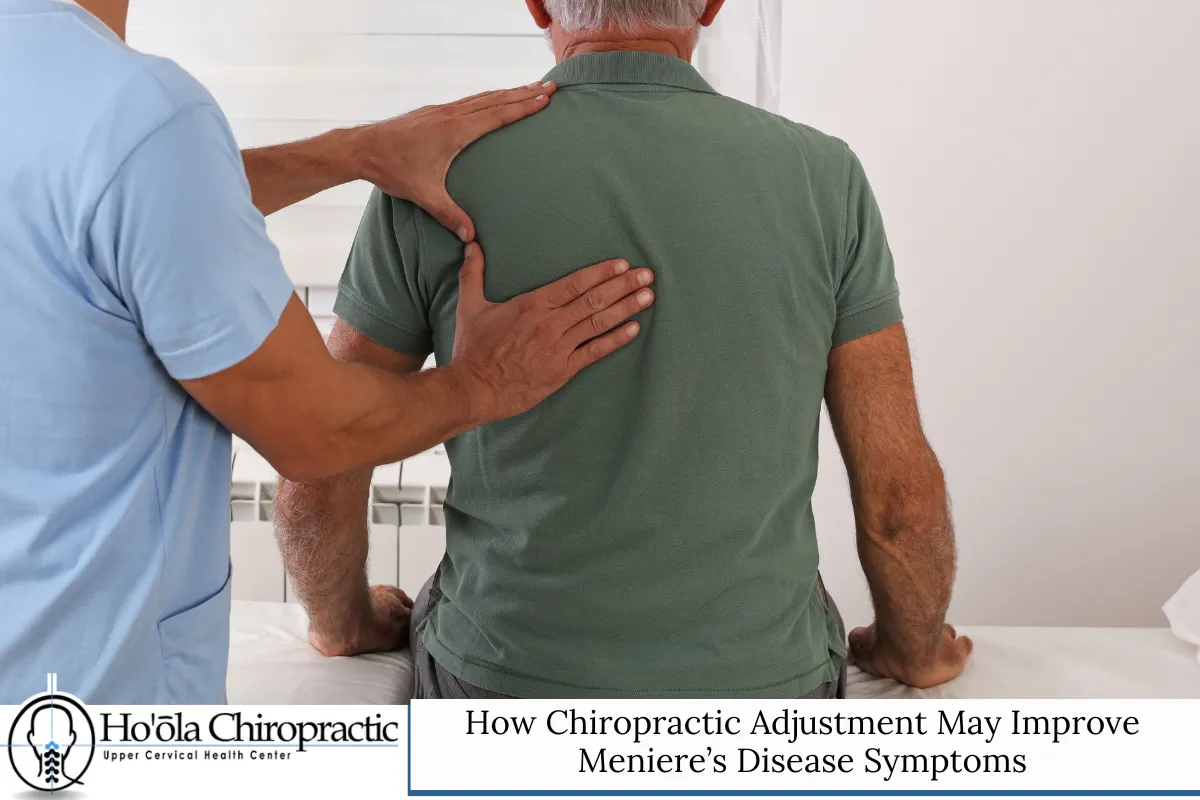
Restoring Fluid Balance and Nerve Function
The goal of chiropractic adjustment, especially upper cervical care, is to restore spinal alignment at the craniocervical junction, which can have a direct impact on the endolymphatic system and fluid balance within the inner ear. This approach may help reduce:
- Fluid buildup and endolymphatic hydrops
- Ringing in the ear
- Sensation of aural fullness
- Frequency and intensity of vertigo attacks
Some patients also report improvement in hearing loss and a decrease in brain fog or muscle pain after receiving regular spinal corrections.
Improving Blood Flow and Neurological Communication
Proper spinal alignment is thought to enhance blood flow through the vertebral artery and meningeal arteries, supporting healthier neurological signals between the brain stem, vestibular nucleus, and central nervous system. Improved fluid drainage and nerve function can reduce the symptoms linked to vestibular dysfunction, auditory problems, and vestibular rehabilitation.
Comparing Chiropractic Treatment with Other Approaches
Conventional Medical Options
Traditional medical care for Meniere’s disease often involves:
- Blood pressure medications to control fluid retention
- Steroid injections for inflammation
- Surgical shunts or ventilation tubes to relieve fluid buildup
- Hearing aids for severe hearing loss
- Dietary changes to reduce salt and manage fluid balance
- Epley maneuver for benign paroxysmal positional vertigo
While these approaches may bring temporary relief, they do not always address the possible underlying cause—such as cervical misalignment, vertebral subluxation, or nerve interference in the cervical spine.
How Chiropractic Differs
Chiropractic care for Meniere’s disease in Honolulu stands out for its focus on spinal health, neurological function, and whole-body wellness. By correcting the alignment of the upper cervical spine, a doctor of chiropractic aims to enhance the body’s natural healing processes, supporting the immune system, healthy cerebrospinal fluid circulation, and proper function of cranial nerves.
What to Expect from a Doctor of Chiropractic in Honolulu
The First Appointment: A Step-by-Step Process
- Consultation and Case Review
The chiropractor will gather a detailed health history, perform a neurological exam, and review your symptoms—such as dizziness, hearing loss, or aural fullness. - Advanced Imaging and Diagnostics
Digital x-rays, MRI scans, and blood work may be recommended to rule out other causes, such as ear infection, fluid drainage issues, or vertebrobasilar insufficiency. - Customized Treatment Plan
The chiropractor will develop a tailored plan, which may include spinal adjustments, physical therapy, and vestibular rehabilitation exercises.- Cervical spine rehabilitation exercises
- Spinal correction and manipulation
- Nutritional advice, including vitamin B-12 or dietary changes
- Follow-Up and Ongoing Care
Progress is monitored using regular assessments, with adjustments to the treatment plan as needed. Some patients may benefit from additional therapies such as soft-tissue trigger-point therapy, specialized techniques, or referral to other health care providers if needed.
The Role of Lifestyle and Prevention Strategies
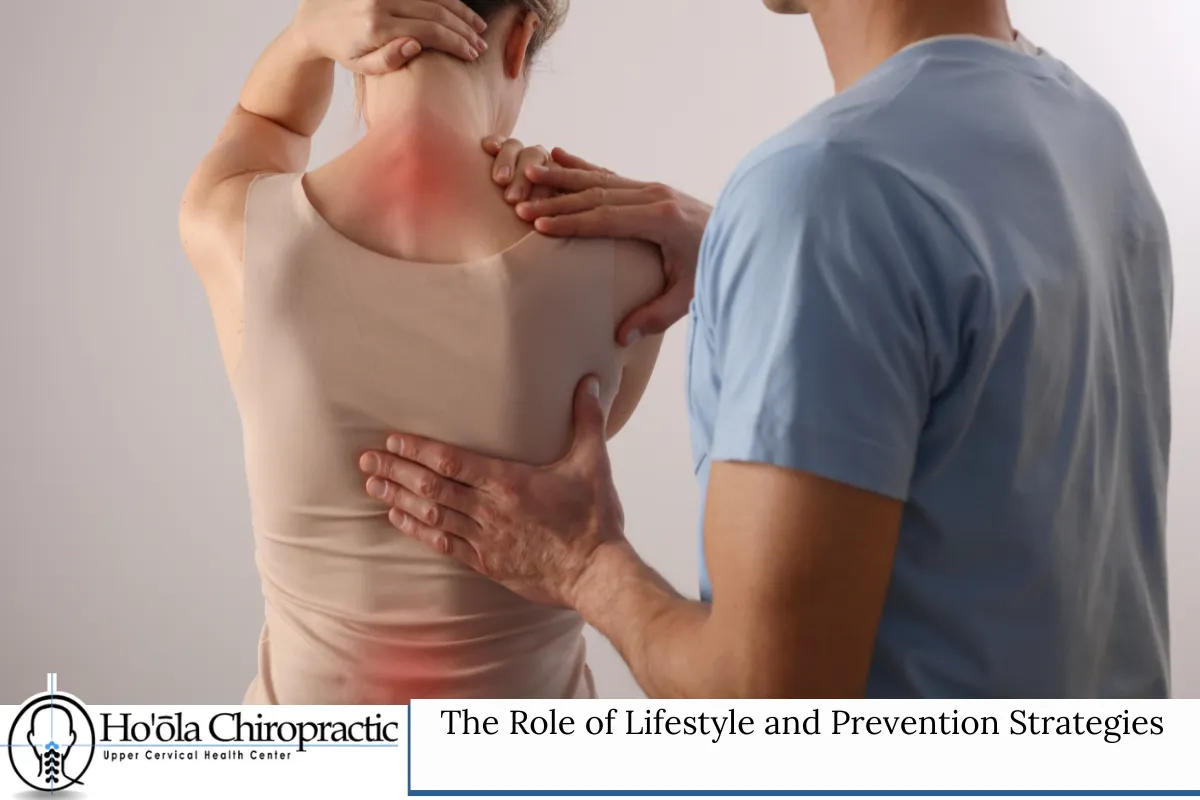
Supporting Spinal Health and Inner Ear Function
A doctor of chiropractic will often advise patients on simple prevention strategies to support spinal and inner ear health:
- Avoid sudden head movements to reduce the risk of cervical trauma or vertebral subluxation
- Maintain a balanced diet low in salt to help with fluid retention
- Stay hydrated to promote healthy body fluids and cell count
- Engage in regular physical therapy and cervical spine rehabilitation exercises
- Practice good posture to reduce spinal stress and maintain proper alignment
- Limit exposure to drug injection equipment and other risk factors for ear infection or inner ear disorder
When to Seek Immediate Medical Attention
While chiropractic treatment can provide relief for many, certain symptoms require urgent medical care—such as sudden severe stage hearing loss, persistent vomiting, or flu-like symptoms that suggest infection or serious underlying problems. A collaborative approach with your health care provider is always best.
Can Chiropractic Care Offer an Effective Solution for Meniere’s Disease in Honolulu?
Residents of Honolulu searching for meniere’s disease chiropractic options now have access to specialized upper cervical chiropractic care. Although individual results can vary, a growing number of patients have reported improvement in vertigo, hearing loss, and other symptoms after chiropractic adjustment and spinal alignment correction.
By focusing on the relationship between the upper cervical spine, nervous system, and inner ear, this approach aims to reduce nerve interference, promote proper fluid drainage, and improve overall neurological function. Upper cervical chiropractic care offers a non-invasive alternative to medication or surgery, with many patients experiencing better body function, decreased episodes of dizziness, and improved quality of life.
Before starting any treatment plan, it’s important to work with an experienced upper cervical chiropractor who uses advanced diagnostic tools—such as x-ray imaging, cervical spine radiographs, and MRI scans—to develop a customized approach. Combining chiropractic treatment with prevention strategies, healthy lifestyle changes, and regular follow-up appointments gives Honolulu residents a greater chance of managing Meniere’s disease symptoms naturally and effectively.
Meniere's Disease Chiropractic in Honolulu, Hawaii — Ho'ola Chiropractic
If you’re seeking meniere’s disease chiropractic care in Honolulu, Hawaii, Ho’ola Chiropractic offers specialized upper cervical chiropractic treatment designed to help reduce vertigo, hearing loss, and other symptoms linked to this challenging inner ear disorder. Our experienced team understands the connection between spinal alignment and fluid buildup in the inner ear. Using advanced techniques like digital x-rays and personalized care plans, we aim to restore your spinal health and support your nervous system function. Conveniently located in Honolulu and serving surrounding areas, Ho’ola Chiropractic provides a welcoming environment for your recovery journey. Call us today at (808) 772-8284 or fill out our online contact form to schedule your consultation and take the first step toward lasting relief.
Frequently Asked Questions
1. How does upper cervical chiropractic care help with Meniere’s disease symptoms?
Upper cervical chiropractic care focuses on correcting misalignments in the upper cervical spine, specifically the atlas (C1) and axis (C2) vertebrae. Research suggests that these misalignments can affect the nervous system, reduce blood flow, and interfere with cerebrospinal fluid drainage—all of which may contribute to the fluid buildup seen in Meniere’s disease. By using gentle, precise adjustments, an upper cervical chiropractor can restore spinal alignment and improve communication between the brain stem and vestibular system. This can help relieve vertigo, aural fullness, and ringing in the ear. Some patients also notice improved hearing and less frequent dizzy spells. While results vary, studies show that upper cervical chiropractic care offers a promising non-invasive option for many individuals with this inner ear disorder.
2. What should I expect during my first visit to Ho’ola Chiropractic for meniere’s disease chiropractic treatment?
During your first appointment at Ho’ola Chiropractic, you’ll start with a detailed health history and a neurological exam focused on your symptoms—such as vertigo, hearing loss, and aural fullness. The doctor of chiropractic may use digital x-rays or cervical spine radiographs to identify any misalignments or vertebral subluxations in your upper cervical spine. You’ll receive a clear explanation of your condition and a customized treatment plan, which may include gentle spinal adjustments, cervical spine rehabilitation exercises, and recommendations for lifestyle changes to support your recovery. Our approach is always patient-centered and collaborative, ensuring you understand each step. Many patients appreciate our emphasis on non-invasive care, advanced diagnostic tools, and our commitment to helping you achieve the best possible outcome.
3. Is chiropractic care for Meniere’s disease safe, and are there any risks?
Chiropractic treatment, especially when performed by an experienced upper cervical chiropractor, is generally considered safe for most people. Techniques used to adjust the upper cervical spine are gentle and specifically designed to minimize stress on the body. However, as with any health care provider, there can be risks for certain individuals—especially those with underlying spinal conditions or recent cervical trauma. At Ho’ola Chiropractic, we always conduct a thorough assessment, including health history, imaging, and, if necessary, consultation with your primary medical care provider. Safety is our top priority. If chiropractic care isn’t appropriate for your situation, we’ll recommend other treatment options or coordinate with other specialists in Honolulu for your best care.
4. How soon can I expect results from meniere’s disease chiropractic treatment?
The timeline for experiencing relief varies from person to person. Some patients notice improvement after just a few adjustments, while others may need several weeks of consistent care to achieve optimal results. Factors such as the severity of your symptoms, the presence of cervical misalignment, and your overall spinal health can affect the speed of recovery. At Ho’ola Chiropractic, we closely monitor your progress with regular check-ins and, when necessary, follow-up imaging. Our goal is to reduce vertigo, aural fullness, and hearing issues as quickly as possible while supporting long-term health. We encourage open communication and provide ongoing education so you feel empowered and informed throughout your treatment journey.
5. Can chiropractic care be combined with other treatment options for Meniere’s disease?
Yes, chiropractic care can often be safely combined with other medical or rehabilitative treatments. In fact, a multidisciplinary approach is frequently recommended for complex inner ear disorders like Meniere’s disease. You might benefit from combining upper cervical chiropractic with dietary changes, medication for fluid retention, vestibular rehabilitation exercises, or hearing aids for severe hearing loss. At Ho’ola Chiropractic, we work closely with other health care providers in Honolulu to ensure your treatment plan is comprehensive and tailored to your unique needs. Collaboration is key to achieving the best results and improving your quality of life when living with Meniere’s disease.
Read Why Choose Meniere’s Disease Chiropractic Care in Honolulu, Hawaii?
